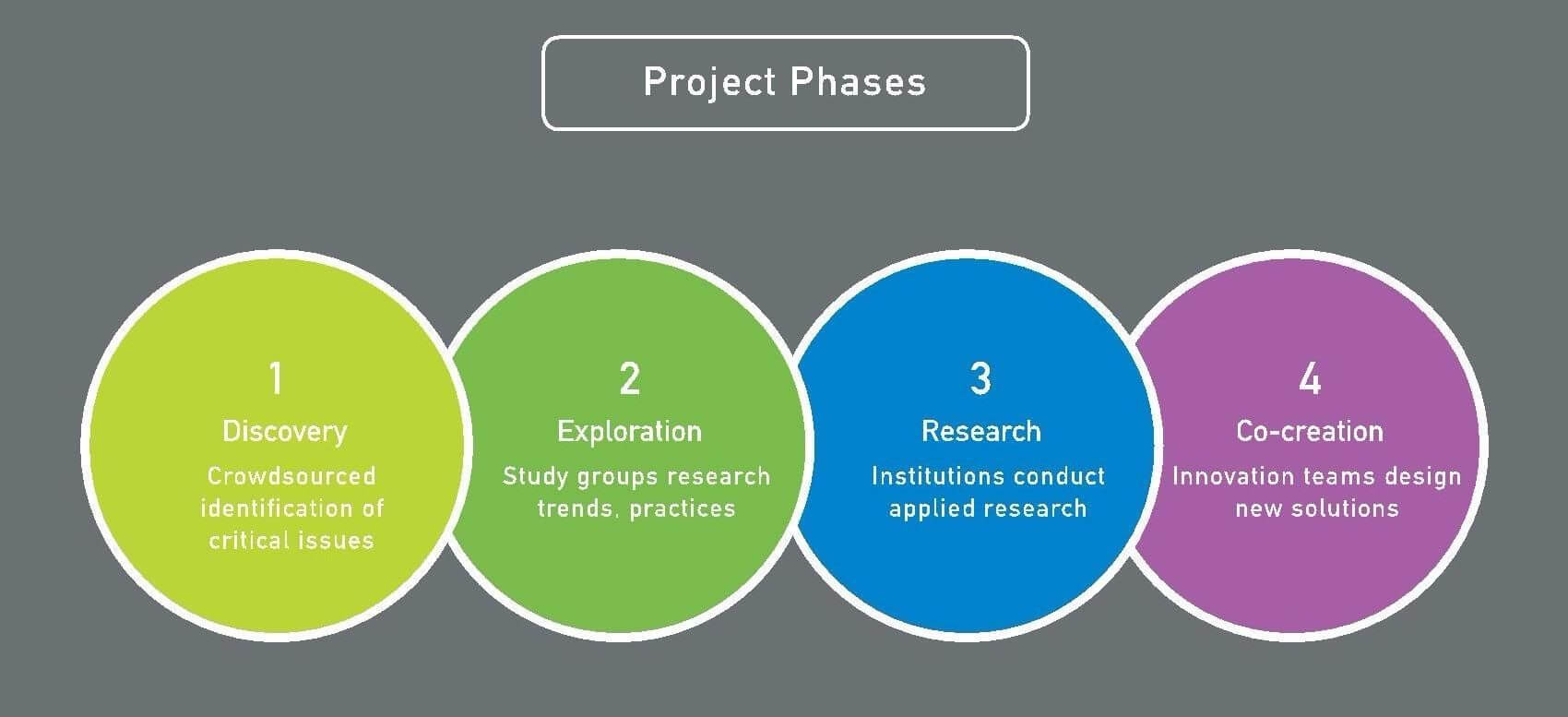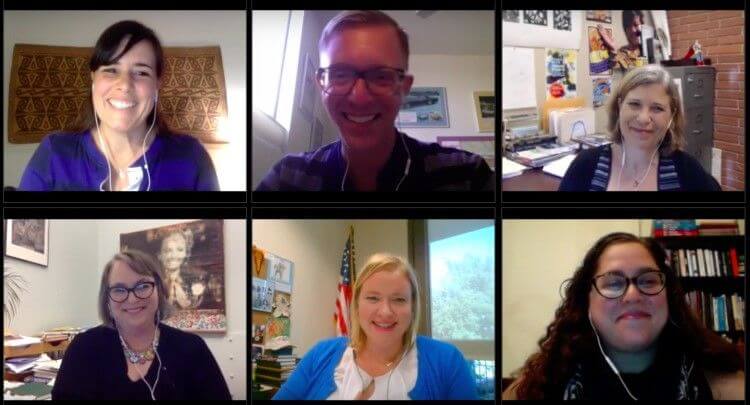
The California Networks for Collaboration (CNfC) was a multi-year project of the California Association of Museums that was directed in collaboration with 13 other statewide partner organizations.
Project Overview
To help realize the California Networks for Collaboration project and the networked, collaborative partnerships that are at the heart of it, a framework organizes the project’s scope into four distinct phases:

Phase 1: Discovery
In 2013, the CNfC applied a systematic approach to discover institutional needs through crowdsourcing and identified the most important critical issue facing the California museum field–– Connecting with People: Engagement and Accessibility. (This leading issue is the focus for all following phases.) For the Final Report on Phase 1, click here; for the Phase 1 Executive Summary, click here.
Phase 2: Exploration
In 2015, the CNfC brought “Learning Collaboratives” or study groups together to establish a baseline understanding and best practices for engagement and accessibility. For the Final Report on Phase 2, click here, or read more below.
Phase 3: Research
In the near future, the CNfC envisions undertaking a statewide action research project that seeks new knowledge to inform the museum field’s understanding of access and engagement, particularly for those communities who do not visit museums.
Phase 4: Co-Creation
In the final phase of the project, innovation teams will self-organize around a single identified critical issue related to the work accomplished across this continuum’s previous phases.
Key Findings for CNfC Phase 2: Exploration
In Phase 2: Exploration, the California Networks for Collaboration offered professional development opportunities to museum professionals and cultural sector colleagues across 12 regions throughout the state. In almost every region, three unique Learning Collaboratives–– or what might be more readily recognized as study groups–– were offered over a six-month period, from July–December 2015. The Learning Collaborative participants came together in a “blended” learning experience (i.e. both in-person and on-line) with the following programmatic offerings:
- Monthly in-person meetings
- Recommended resources and activities curated by national experts
- A field trip to a local museum to explore a case study
- Online discussions in between meetings
- Monthly webinars with content experts
Each study topic stemmed from the most important critical issue facing the California museum field (identified in Phase 1: Discovery)–– Connecting with People: Engagement and Accessibility:
Accessibility Learning Collaborative
Participants worked together to gain sensitivity and practical tools to intentionally design for diverse audiences’ experiences inside and outside of the museum.
Listen to statewide participants reflect on their key learnings in this panel discussion
Audience Research Learning Collaborative
Participants joined together to learn how to think “evaluatively” in designing small, practical audience research studies to collect meaningful data.
Listen to statewide participants reflect on their key learnings in this panel discussion
Engagement Strategies Learning Collaborative
Participants came together to deepen shared insights and practices to effectively align institutional goals and directly engage the communities they serve.
Listen to statewide participants reflect on their key learnings in this panel discussion
In conclusion of their studies, Learning Collaborative participants documented their key learnings in final knowledge products with the hope that museum colleagues near and far might apply these most poignant takeaways and recommendations to their own practices. You may access and download these knowledge products here.
If you believe that you may be interested in learning more about the CNfC Phase 2: Exploration in more detail, please follow this decision tree to see if the final report is for you:

Has this decision tree piqued your interest!? You are welcome to download CNfC Phase 2: Exploration final report here.
For more information and background about the California Networks for Collaboration project overall, here is a list of additional documents ready for download:
- CNfC Steering Committee Findings re Collaborative Learning Networks_2012
- CNfC Phase 1 Executive Summary_2013
- CNfC Phase 1 Full Report_2013
- CNfC Phase 2 Learning Collaboratives FAQ_2015
- CNfC Phase 2 Regions and Partners_2014-17
- CNfC Phase 2 All Project Staff and Participants_2014-17
- CNfC Phase 2 Learning Collaborative Studies Scope and Sequence_2015
- CNfC Phase 2 Knowledge Product FAQ_2015
- CNfC Phase 2 Participants’ Knowledge Products
- CNfC Phase 2 Webinar Offerings_2015
- CNfC Phase 2 Case Study Organizations_2015
- CNfC Phase 2 Final Report_2017
For questions or further information about the CNfC project, please contact:
Lacey Lieberthal
Administrative Coordinator, California Association of Museums
admin@calmuseums.org
831/471.9970x101

This project was made possible in part by the Institute of Museum and Library Services, grant number MG-10-14-0010-14, and with the generous support of all CNfC partner organizations:
- Balboa Park Learning Institute, a program of the Balboa Park Cultural Partnership
- California Arts Council
- California Humanities
- Cultural Connections
- Eastern Sierra Cultural Heritage Alliance
- Exhibit Envoy
- Museum Educators of Southern California
- Riverside Art Museum
- Sacramento Association of Museums
- Santa Barbara Educators' Roundtable
- Solano County Museum Consortium
- Sunnylands Center & Gardens
- Turtle Bay Exploration Park



